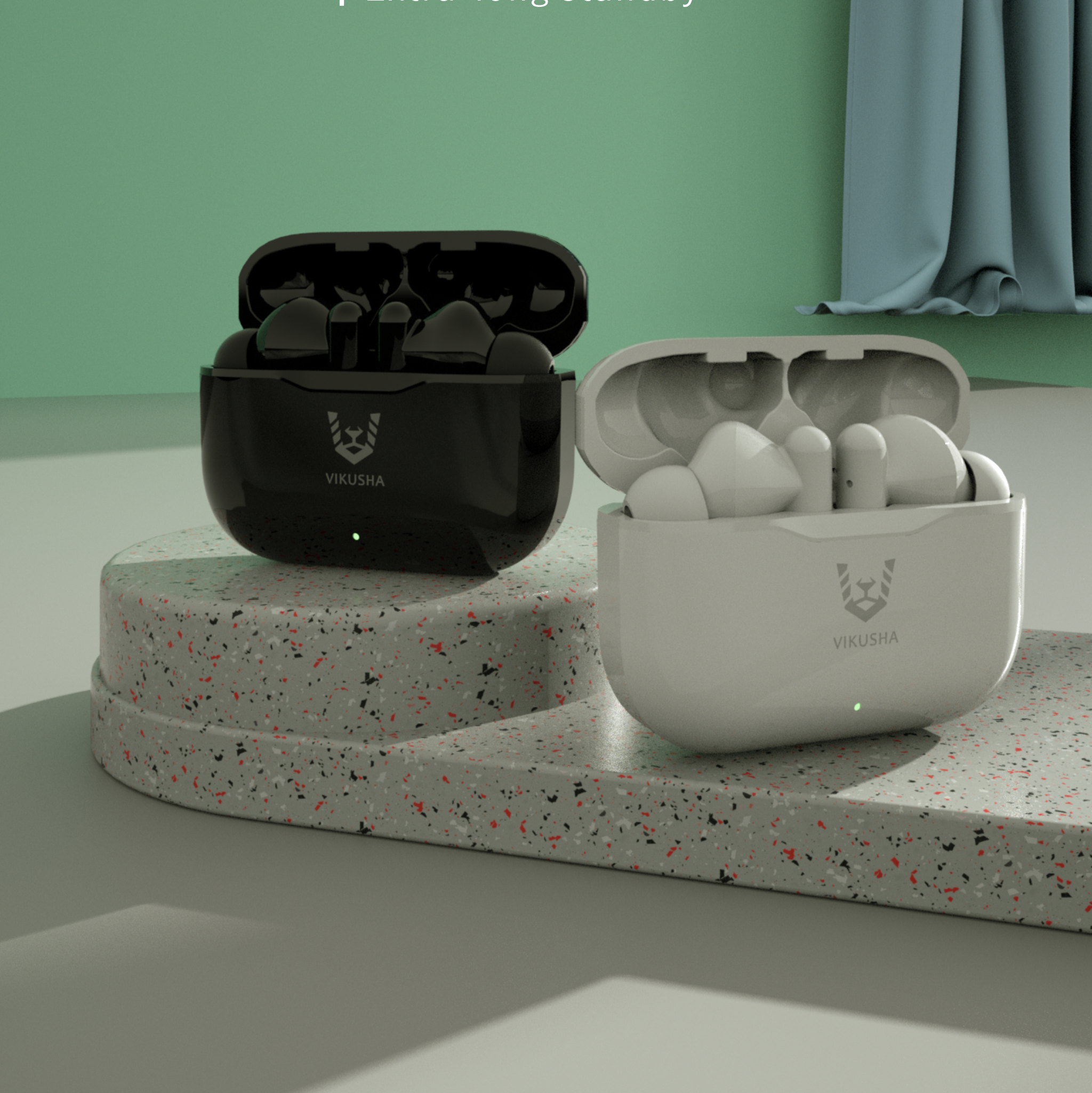True wireless earphones are earphones that connect to your device via Bluetooth and have no wires. They are convenient, comfortable, and stylish. However, they are also different in many aspects, such as wearing styles, uses, functions, and sound quality. How do you distinguish them? Here are some tips and examples.
Wearing styles
Wearing styles are the ways that you wear the earphones in or on your ears. They affect how the earphones look and feel. You can distinguish them by:
- Ear tips: These are the parts that go into your ear canal. They come in different sizes, shapes, and materials. For example, you can choose silicone, foam, or rubber ear tips. You can also choose round, oval, or conical ear tips.
- Ear wings or hooks: These are the parts that go around or behind your ear. They help to keep the earphones in place and prevent them from falling out. For example, you can choose soft, hard, or adjustable ear wings or hooks. You can also choose curved, straight, or angled ear wings or hooks.
- Design: This is the overall appearance and style of the earphones. They come in different colors, patterns, and shapes. For example, you can choose black, white, or red earphones. You can also choose plain, striped, or dotted earphones. You can also choose round, square, or triangular earphones.
Uses
Uses are the purposes and situations that you use the earphones for. They affect what you need and want from the earphones. You can distinguish them by:
- Activities: These are the things that you do with the earphones. They come in different types and levels of intensity. For example, you can use the earphones for listening to music, watching videos, making calls, or playing games. You can also use the earphones for walking, running, cycling, or working out.
- Environments: These are the places and conditions that you use the earphones in. They come in different levels of noise and interference. For example, you can use the earphones at home, in the office, on the street, or in a park. You can also use the earphones in a quiet, noisy, windy, or rainy environment.
- Durations: These are the lengths of time that you use the earphones for. They come in different units and ranges of measurement. For example, you can use the earphones for a few minutes, an hour, a day, or a week. You can also use the earphones for a short-term, long-term, occasional, or frequent use.
Functions
Functions are the capabilities and features that the earphones have. They affect what you can do with the earphones besides the basic functions. You can distinguish them by:
- Controls: These are the ways that you can operate and adjust the earphones. They come in different methods and options. For example, you can control the earphones by tapping, pressing, swiping, or rotating them. You can also control the volume, playback, voice assistant, or noise cancellation of the earphones.
- Connections: These are the ways that you can connect and pair the earphones with your device or other devices. They come in different modes and standards. For example, you can connect the earphones by Bluetooth 4.0, 5.0, or 6.0. You can also connect one or both earbuds with your device or another device.
- Extras: These are the additional functions and features that the earphones have. They come in different types and categories. For example, you can have water resistance, dust resistance, sweat resistance, or shock resistance on your earphones. You can also have GPS tracking,
heart rate monitoring,
or fitness tracking on your earphones.
Sound quality
Sound quality is the level of clarity,
balance,
and immersion of the sound that the earphones produce.
It affects how you enjoy and appreciate
the sound.
You can distinguish it by:
- Drivers: These are
the parts that produce sound.
They come in different sizes,
materials,
and technologies.
For example,
you can choose dynamic,
balanced armature,
or hybrid drivers.
You can also choose 6 mm,
8 mm,
or 10 mm drivers. - Frequency response: This is
the range of sounds that
the earphones can reproduce.
It is measured in hertz (Hz).
A wider frequency response means more details
and nuances
in
the sound.
For example,
you can choose 20 Hz to 20 kHz,
15 Hz to 25 kHz,
or 10 Hz to 30 kHz frequency response. - Noise cancellation: This is
the ability of
the earphones to block out unwanted sounds from
the outside.
It can improve your listening experience
and focus.
There are two types of noise cancellation: active and passive.
Active noise cancellation uses a microphone and a circuit to create a sound wave that cancels out
the noise.
Passive noise cancellation relies on
the design and fit of
the earphones to seal off
the noise.
These are some of the ways to distinguish different wearing styles, uses, functions, and sound quality of true wireless earphones. You can use them to find the best earphones for yourself. True wireless earphones can enhance your audio experience and lifestyle.



